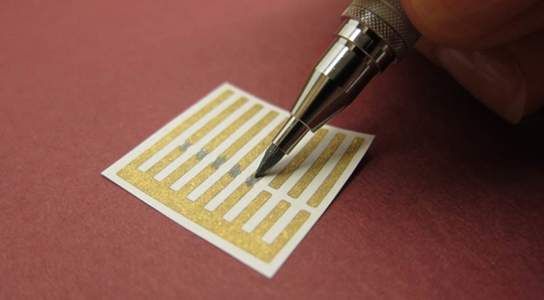
A team of MIT chemists revealed how they developed a method for drawing gas sensors on paper using a tailor-made, super-conductive carbon nanotube pencil.
The scientists published their findings in the German journal Angewandte Chemie. Electrically charged carbon nanotubes, about 50,000 times thinner than human hair, make for great sensors. When a gas molecule disturbs its surface, it binds to the nanotube, altering the current flow. This kind of system can be used to detect chemical changes in the air, and could lead to the development of biosensors for national security reasons. They could also be used in the food industry since carbon nanotube sensors have been used to detect ethylene levels excreted by ripening fruits.
Buildings these sensors are inexpensive, but hazardous since the nanotubes must be dissolved in solvents like dichlorobenzene. Therefore, it was thought unlikely that they would ever be mass-produced. The new way described in the paper uses a solvent-free method to overcome this developmental hurdle. Carbon nanotubes are related to the main component in the lead of a pencil, which is graphite, states postdoctoral student Katherine Mirica.
The team used commercial carbon nanotube powder compressed into the shape of a pencil’s lead. This rendered it stable and reliable. Then, they printed gold electrodes onto standard paper and drew lines of carbon nanotubes using the pencil. Once an electric current is passed along the nanotubes, this particular sensor can measure the ammonia in the atmosphere. However, different types of sensors can be made using this same process.
Reference: “Mechanical Drawing of Gas Sensors on Paper” by Dr. Katherine A. Mirica, Jonathan G. Weis, Dr. Jan M. Schnorr, Dr. Birgit Esser and Prof. Dr. Timothy M. Swager, 4 October 2012, Angewandte Chemie.
DOI: 10.1002/anie.201206069